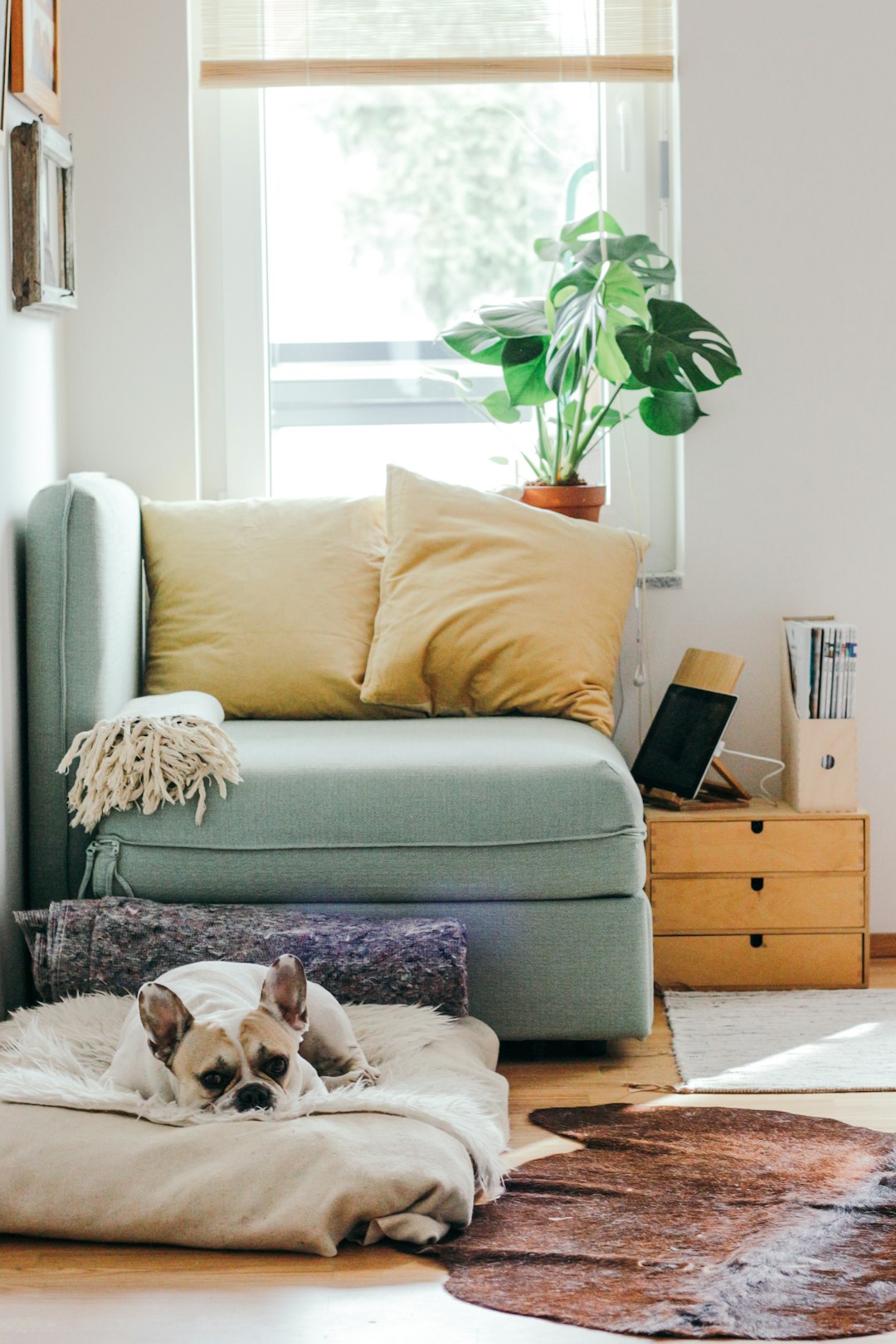Introduction to Home Automation
Home automation, often referred to as smart home technology, encompasses a wide range of devices and systems that can automate household tasks and functions. These technologies are designed to improve the convenience, security, and efficiency of your home.
One of the main objectives of home automation is to provide remote access and control of household devices and systems. This is typically achieved through the use of smartphones, tablets, or computers. For instance, lighting, heating, and cooling systems can be controlled remotely, allowing users to adjust settings according to their preferences and schedules.
The evolution of home automation has been driven by advancements in Internet of Things (IoT) technology. IoT refers to a network of interconnected devices that communicate and exchange data over the internet. In the context of home automation, IoT enables devices to work together seamlessly, providing a cohesive and integrated user experience.
Another significant aspect of home automation is energy efficiency. Automated systems can optimize energy usage by adjusting lighting and temperature based on occupancy or time of day. This can lead to substantial cost savings on utility bills and contribute to a more sustainable lifestyle.
Security is also a critical component of home automation. Smart locks, surveillance cameras, and alarm systems can be managed remotely, providing homeowners with real-time updates and the ability to respond promptly to any incidents. These systems can also include features such as facial recognition and motion detection to enhance security measures.
Compatibility and interoperability are essential factors to consider when setting up a home automation system. Devices from different manufacturers should be able to communicate with each other to ensure a smooth and integrated operation. This is often facilitated by using a central hub or controller that acts as the system’s brain.
Home automation is a rapidly growing field with continuous advancements and innovations. As technology evolves, it is likely that more sophisticated and user-friendly systems will become available, making it easier for homeowners to enhance their daily routines through automation.
Key Components of Home Automation Systems
Home automation systems comprise various components that work together to streamline household operations. Understanding these key components is crucial for effectively implementing a home automation strategy.
Smart Hubs
The smart hub serves as the central control point for a home automation system. It connects and manages different smart devices, allowing them to communicate with each other. Popular smart hubs include Amazon Echo, Google Nest Hub, and Samsung SmartThings Hub.
Smart Lights
Smart lighting systems can be controlled remotely via a smartphone app or automated schedules. Brands like Philips Hue and LIFX offer a range of smart bulbs that can adjust brightness and color. These can contribute significantly to energy efficiency and convenience.
Smart Thermostats
Smart thermostats, such as the Nest Learning Thermostat or the Ecobee SmartThermostat, provide precise control over home heating and cooling systems. They can learn user preferences and optimize climate control to enhance comfort and reduce energy costs.
Security and Surveillance
Home automation also extends to security systems. Smart locks, cameras, and doorbells from companies like Ring, Arlo, and August offer features such as real-time video feeds, motion detection, and remote access.
Smart Speakers and Voice Assistants
Smart speakers, such as Amazon Echo and Google Home, integrate voice assistants that can control other smart devices, set reminders, and even play music. They act as an accessible interface for the entire home automation system.
Smart Appliances
Many household appliances now feature smart technology, including refrigerators, washing machines, and ovens. Brands like LG, Samsung, and Bosch offer appliances that can be controlled remotely, providing convenience and efficiency.
Networking Devices
For all these components to function seamlessly, a robust home network is essential. Reliable Wi-Fi routers and range extenders from companies like Netgear and TP-Link ensure that all devices stay connected and operate smoothly.
Home Automation Platforms
Several platforms provide the software backbone for home automation systems. Services like Apple HomeKit, Google Assistant, and Amazon Alexa allow users to integrate and manage their devices through a unified interface.
By understanding these key components, users can build a reliable and efficient home automation system tailored to their specific needs and preferences.
Setting Up Your Home Automation Ecosystem
Setting up your home automation ecosystem involves integrating various smart devices and systems that work together seamlessly to improve your daily routine. This process can be broken down into several key steps: selecting the right hub, choosing compatible devices, configuring network settings, and optimizing automation rules.
Selecting the Right Hub
The hub acts as the central point of control for your home automation system. Popular options include the Amazon Echo, Google Home, and Apple HomePod. When choosing a hub, consider factors such as compatibility with other devices, ease of use, and integration with voice assistants.
Choosing Compatible Devices
Ensure that the smart devices you select are compatible with your chosen hub. Common devices include smart lights, thermostats, locks, cameras, and sensors. Compatibility can generally be checked on the device’s packaging or through the manufacturer’s website.
Examples of Smart Devices and Their Functions:
- Smart Lights: Control brightness, color, and scheduling remotely.
- Smart Thermostats: Adjust heating and cooling based on your preferences.
- Smart Locks: Secure your doors with remote access and automation.
- Smart Cameras: Monitor your home with live streaming and recordings.
- Smart Sensors: Detect motion, temperature, and open/close status.
Configuring Network Settings
For a seamless experience, all devices should be connected to a stable and secure Wi-Fi network. Consider setting up a dedicated IoT network separate from your main network to enhance security. Ensure that your router supports the number of devices you plan to connect.
Wi-Fi Network Configuration Tips:
- Use a mesh network to cover larger areas.
- Update your router’s firmware regularly.
- Secure your network with a strong password and WPA3 encryption.
Optimizing Automation Rules
Create automation rules that enhance convenience and efficiency. These rules can be set up through the hub’s app or dedicated software. Common automation scenarios include scheduling lights to turn on at sunset, adjusting the thermostat when you leave home, and locking doors automatically at night.
Example Rule Implementations:
- If motion is detected in the living room after 10 PM, turn on the lights.
- When the front door is unlocked, send a notification to your smartphone.
- If the temperature drops below 68°F, turn on the heating system.
Here’s a comparison of popular hub features:
| Hub | Key Features |
|---|---|
| Amazon Echo | Voice control with Alexa, wide device compatibility, routines |
| Google Home | Voice control with Google Assistant, seamless integration with Google services |
| Apple HomePod | Voice control with Siri, strong privacy and security features, integration with Apple ecosystem |
Setting up your home automation ecosystem is a process that involves careful selection, integration, and configuration of devices and systems. Following these steps can help ensure that your smart home operates efficiently and effectively.
Enhancing Morning Routines with Automation
Starting your day on the right foot can significantly impact your productivity and overall well-being. Home automation offers numerous ways to streamline and enhance your morning routines through the use of smart devices and integrated systems.
One of the primary benefits of home automation in the morning is the seamless execution of tasks that otherwise require manual intervention. For example, smart alarms can gradually wake you up with increasing light and sound, simulating a natural sunrise. This can help regulate your circadian rhythm and improve the quality of your sleep.
Once you’re awake, automated coffee makers can begin brewing your morning coffee based on a predetermined schedule. This ensures that you wake up to a fresh pot every day, saving you time and effort. Similarly, smart thermostats can adjust the temperature in your home to a comfortable level, making it easier to get out of bed, especially during colder months.
Integrating your smart home devices can also contribute to a smoother morning routine. For instance, smart speakers can provide you with a personalized morning briefing, which may include the weather forecast, news updates, and your daily schedule. This centralizes all the information you need, reducing the time spent checking various sources.
Smart lighting systems can be programmed to gradually increase brightness in key areas of your home, ensuring that you have adequate lighting as you move from your bedroom to your bathroom and kitchen. These systems can also be set to turn off automatically after you leave, conserving energy.
Below is a table summarizing common smart devices and their potential benefits for enhancing morning routines:
| Smart Device | Benefits |
|---|---|
| Smart Alarm Clocks | Gradual waking, better sleep quality |
| Smart Coffee Makers | Automatic brewing, time-saving |
| Smart Thermostats | Comfortable wake-up temperature |
| Smart Speakers | Personalized briefings, time efficiency |
| Smart Lighting | Gradual brightness increase, energy saving |
Another noteworthy aspect is the automation of window shades or blinds. These can be programmed to open at a specific time, allowing natural light to enter your home and help you wake up more naturally. This can also regulate temperature and conserve energy by reducing the need for artificial lighting.
Security systems can be integrated into your morning routines as well. For example, door locks can be scheduled to unlock at the time you usually leave home, and security cameras can be set to activate or change modes accordingly.
Finally, consider the use of smart home assistants to control these devices through voice commands or mobile apps. This adds an extra layer of convenience, allowing you to make real-time adjustments without needing to interact with each device manually.
In conclusion, leveraging home automation to enhance your morning routines can lead to a more efficient, enjoyable, and productive start to your day. Through the use of interconnected devices and systems, you can automate tasks, save time, and improve your quality of life.
Automating Evening and Nighttime Activities
Integrating home automation into evening and nighttime activities can transform your home into a sanctuary of comfort and relaxation, providing convenience and energy efficiency. Here are several effective ways to enhance your evening and nighttime routines using home automation technology.
1. Automated Lighting
Smart lighting systems can be programmed to gradually dim as the evening progresses, creating a calming ambiance. This can help signal to your body that it’s time to wind down, promoting better sleep hygiene. Many smart light bulbs are compatible with voice assistants, allowing for quick adjustments without needing to get up.
Benefits of automated lighting in your evening routine include:
- Energy savings with scheduled lighting
- Enhanced comfort with customizable settings
- Improved sleep quality through gradual dimming
2. Climate Control
Smart thermostats can be set to adjust the temperature based on the time of day. For instance, lowering the temperature slightly at night can create an ideal sleeping environment. Additionally, these devices can be controlled remotely, ensuring your home is at the perfect temperature when you return in the evening.
3. Security Systems
Home automation allows for enhanced security through smart locks, cameras, and alarms. Setting up your security system to activate automatically at night ensures peace of mind. You can also receive real-time alerts and monitor your home from anywhere using your smartphone.
4. Entertainment Systems
Automating your evening entertainment involves integrating smart TVs, sound systems, and streaming devices. You can create routines that turn on your favorite shows or music playlists at specific times, making your evenings more enjoyable and stress-free.
5. Nighttime Routines
Automation can assist with bedtime routines, such as turning off all lights, locking doors, and even starting white noise machines. You can set these actions to trigger automatically or with a simple voice command. Here’s a breakdown of some common bedtime activities and how they can be automated:
| Activity | Automation Solution |
|---|---|
| Turning off lights | Smart lighting schedules |
| Locking doors | Smart locks |
| Starting white noise | Smart speakers |
| Adjusting thermostat | Smart thermostats |
By leveraging these technologies, you can create a seamless and efficient evening and nighttime routine, contributing to a more restful sleep and a more secure and energy-efficient home.
Integrating Home Automation with Health and Wellness
Integrating home automation with health and wellness can significantly improve your overall quality of life. By leveraging smart devices and systems, you can create a more conducive environment for maintaining your health and managing wellness routines.
Smart Thermostats and Air Quality Monitoring
Smart thermostats can help maintain optimal indoor temperatures, which can be crucial for those with health conditions like asthma or allergies. These devices can be programmed to adjust the temperature at different times of the day and even provide data on energy usage.
Air quality monitors can help track indoor pollutants and humidity levels. These devices typically work with other smart home products to purify the air when necessary.
- Maintains optimal indoor temperature
- Tracks indoor pollutants and humidity levels
- Provides data on air quality
Wearables and Fitness Tracking
Wearable devices like smartwatches can monitor vital health metrics such as heart rate, activity levels, and sleep patterns. These devices often integrate seamlessly with other smart home systems to provide a comprehensive health management tool.
For example, smart lighting can be programmed to wake you up gently based on your sleep cycles, as monitored by your wearable device. Additionally, smart speakers and displays can provide you with personalized fitness routines and health tips based on the data collected from these wearables.
Remote Health Monitoring
Smart home systems can also support remote health monitoring, which is particularly useful for elderly individuals or those with chronic illnesses. Devices like smart blood pressure monitors, glucose meters, and even weight scales can send data directly to your healthcare providers, enabling remote consultations and timely interventions.
| Device | Function |
|---|---|
| Smart Blood Pressure Monitor | Tracks and sends blood pressure data |
| Smart Glucose Meter | Monitors and records blood sugar levels |
| Smart Scale | Measures and logs body weight |
In sum, integrating home automation with health and wellness components can create a smart, responsive living environment. These systems can not only help to maintain optimal living conditions but also support proactive health management, making it easier to maintain a healthy and balanced life.
Future Trends and Innovations in Home Automation
Future Trends and Innovations in Home Automation
The landscape of home automation is continuously evolving, driven by advancements in technology and increasing consumer demand for more convenient, connected, and efficient homes. The following are some key trends and innovations shaping the future of home automation:
1. Artificial Intelligence and Machine Learning
Artificial Intelligence (AI) and Machine Learning (ML) are revolutionizing home automation by enabling systems to learn and adapt to user behaviors. These technologies allow devices to make predictive adjustments, such as optimizing heating and cooling based on past usage patterns or recommending energy-saving actions.
2. Voice-Activated Assistants
Voice-activated virtual assistants like Amazon Alexa, Google Assistant, and Apple’s Siri are becoming increasingly integrated into home automation systems. These assistants can control various smart devices, provide information, and perform tasks through simple voice commands, making home automation more accessible to a wider audience.
3. Interoperability and Integration
The demand for seamless interoperability between different home automation products is growing. Innovations like the Matter standard, developed by the Connectivity Standards Alliance (CSA), aim to enhance compatibility and ease of integration across different devices and platforms, creating a more cohesive and user-friendly smart home experience.
4. Enhanced Security Features
As home automation systems become more connected, ensuring robust security features is critical. Innovations in encryption, biometric authentication, and real-time monitoring are being incorporated to protect user data and prevent unauthorized access to smart home systems.
5. Energy Management and Sustainability
Future home automation systems are placing a stronger emphasis on energy management and sustainability. Smart grids, energy-efficient appliances, and automated systems that monitor and reduce energy consumption are becoming more prevalent, helping homeowners reduce their carbon footprint and lower utility costs.
6. Health and Well-being Integration
Integration of health and well-being features into home automation systems is an emerging trend. Devices that monitor air quality, regulate lighting to improve sleep patterns, and provide reminders for medication are becoming integrated into comprehensive smart home systems, offering a holistic approach to health management.
7. Remote Access and Control
With the advent of 5G technology and enhanced mobile connectivity, remote access and control of home automation systems are becoming more reliable and responsive. Homeowners can monitor and manage their homes from anywhere in the world, providing greater convenience and peace of mind.
In conclusion, the future of home automation is marked by significant technological advancements and innovations that promise to make homes smarter, more efficient, and more responsive to the needs of their occupants. As these trends continue to evolve, they will likely lead to even more sophisticated and integrated smart home solutions.



